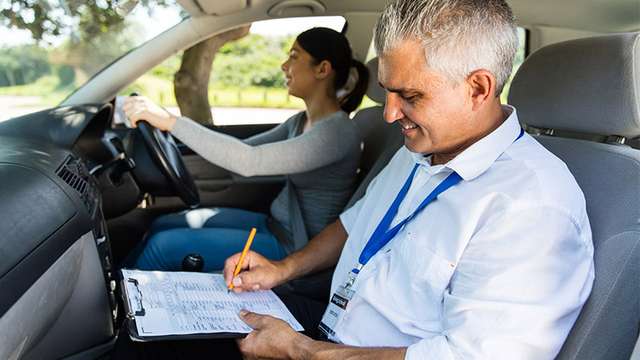- learn to drive
What do driving examiners look for during a driving test?

Updated 17 Dec 2019
Joel Ilton

Sitting a driving test can be one of the most nerve-racking experiences a young person can face, often seeing the driving examiner as someone who is going to criticise and fail them if they make even one small mistake. However, driving examiners have a set list of criteria they are monitoring during the test, most of which are common sense and based on road rules that are clearly stated in any Learner Drivers information handbook.
These criteria can be broken up into four different categories:
- Decision making and hazard awareness
- Road position
- Speed management
- Driver observation
The first criteria is decision making and hazard awareness. The driving examiner monitors the learner driver’s ability to identify hazards, such as vehicles or pedestrians approaching from adjacent streets and potentially dangerous road conditions. This also includes the drivers’ ability to ready for slowing traffic conditions, smooth brake and accelerator operation and changing lanes in traffic safely.
This links into the second criteria, which focuses on the drivers’ ability to monitor their road position, maintaining a three-second following gap wherever possible, having a good reaction and response time to avoid any sudden changes and maintain their crash avoidance space.
The third criteria looks at speed management, arguably one of the most important skills for any driver. The driving examiner will be looking for the driver to exhibit the ability to manage their speed to suit the driving conditions, driving at the posted speed limit as well as monitoring potential situations where they will need to reduce their speed, such as blind corners or tight spaces such as narrow streets with parked cars.
The last criteria looks at the drivers’ ability to observe the conditions around them. Continuously scanning mirrors, gauges and the roads surface, as well as checking blind spots when changing lanes, merging or reversing are the actions that the driving examiner will be checking for
If the learner driver is having lessons with a driving instructor, these criteria will be covered at length. This will give the learner driver the best chance at passing their test with flying colours, getting them out on the road with all the skills needed to operate their vehicle in a safe manner.

Written By
Joel Ilton
Finding a passion for cars from a young age, Joel carried out work experience as a mechanic whilst at school before starting an apprenticeship after finishing year 12.
Joel is now the Workshop Manager at Robina Volkswagen.